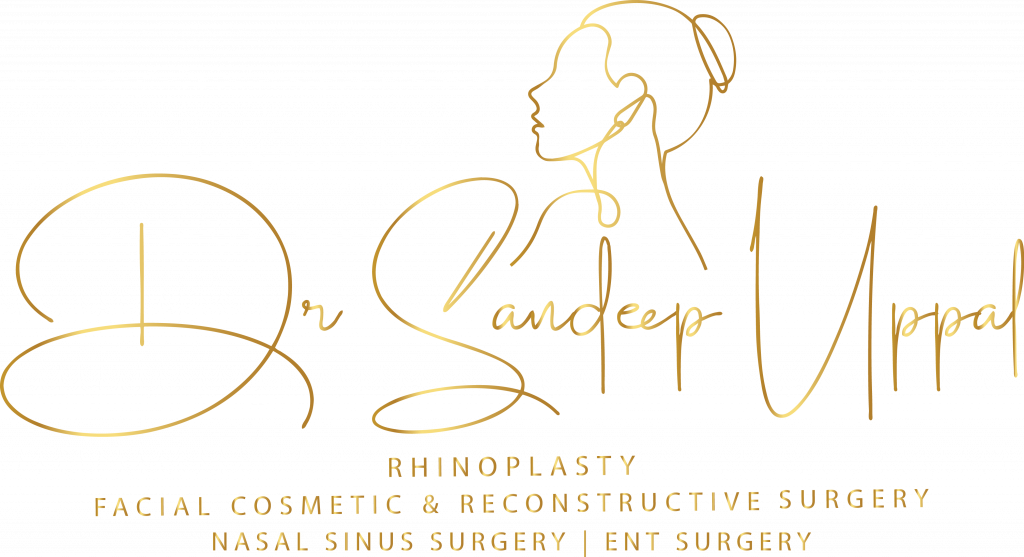MANAGEMENT OF SINUSITIS
WHAT CAUSES SINUSITIS?
Understanding the root causes of sinusitis is essential for effective management and treatment. Here’s a comprehensive look at what can cause this condition.
INFECTIONS FROM VIRUSES, BACTERIA, OR FUNGI
The most common cause of sinusitis is infection. Viral infections, often following a common cold, can lead to sinusitis.
Bacterial and fungal infections are less common but can be more severe, requiring targeted treatment like antibiotics or antifungal medications.
NASAL POLYPS OR TUMOURS
One frequent cause of nasal blockage and discomfort is the growth of nasal polyps or tumours.
Nasal polyps are noncancerous, swollen tissue formations in the nasal passages or sinuses, often resulting from chronic inflammation due to asthma, recurring infection, allergies, drug sensitivity, or certain immune disorders.
On the other hand, nasal tumours can be noncancerous (benign) or cancerous (malignant) growths in the nasal cavity or sinuses.
Both conditions can lead to symptoms such as nasal congestion, reduced sense of smell, and breathing difficulties. While nasal polyps are often treated with steroids, allergy medications, or surgery, nasal tumours require more specific treatments such as surgery, radiation therapy, or chemotherapy, depending on their nature and severity.
DEVIATED NASAL SEPTUM
A deviated septum can obstruct the nasal passages and impede the flow of mucus, leading to inflammation and infection. Surgical correction may be considered in severe cases.
ALLERGIC REACTIONS
Allergic rhinitis, often triggered by pollen, dust, or pet dander, can cause inflammation of the nasal passages and contribute to sinusitis. Anti-allergy medications and avoiding triggers are common treatment approaches.
TOOTH INFECTIONS
Infections in the upper teeth can spread to the adjacent sinuses and trigger sinusitis. Dental treatment, often including antibiotics, is usually necessary to treat the underlying cause.
NASAL FOREIGN BODIES
Foreign objects lodged in the nasal passages, especially common among young children, can block mucus drainage and lead to sinusitis. Removal of the foreign body is essential for treatment.
RISK FACTORS
While the above are direct causes, certain risk factors can make one more susceptible to sinusitis:
- Smoking or exposure to second-hand smoke.
- Frequent upper respiratory infections.
- Immune system deficiencies.
HOW IS SINUSITIS DIAGNOSED?
Diagnosing sinusitis involves a multi-step approach that may include a combination of history-taking, physical examination, and diagnostic tests. Dr Sandeep Uppal and his team, backed by advanced training in rhinology, are adept at carrying out these procedures to accurately diagnose sinusitis. Here are the typical steps involved:
HISTORY AND EXAMINATION
The first step always involves taking a thorough medical history, focusing on the duration, frequency, and severity of symptoms. This is followed by a physical examination, where Dr Sandeep may check for facial tenderness, nasal congestion, and discharge.
NASAL ENDOSCOPY
A nasal endoscopy allows Dr Sandeep to look directly into the nasal passages and sinuses. A thin, flexible tube with a light and camera at the end is inserted through the nostrils. This can reveal signs of inflammation, polyps, or any other abnormalities that could be causing symptoms.
IMAGING STUDIES
In more complex or severe cases, imaging studies such as a computed tomography (CT) scan or magnetic resonance imaging (MRI) may be ordered. These imaging tests provide detailed views of the sinuses and can help in identifying structural issues like a deviated septum or presence of large polyps.
ALLERGY TESTING
If allergic rhinitis is suspected to be contributing to the sinusitis, allergy testing may be conducted. Methods can include skin prick tests or blood tests to identify specific allergens.
MICROBIOLOGICAL TESTS
For chronic or recurrent cases, a culture of the sinus discharge may be taken to identify the type of bacteria or fungus causing the infection, guiding the choice of antibiotics.
ADDITIONAL TESTS
In some instances, additional tests like a complete blood count (CBC) may be done to rule out other underlying conditions.
The comprehensive approach to diagnosis at The ENT Clinic ensures that the underlying cause of the sinus-related symptoms is accurately identified, allowing for an effective, tailored treatment plan in line with current medical guidelines.
TREATMENT OF ACUTE AND CHRONIC SINUSITIS
Dr Sandeep Uppal and his team are committed to adhering to the highest standards of medical care, including those set forth by the European Position Paper on Rhinosinusitis and Nasal Polyps (EPOS). Here is a more detailed discussion of how treatment for chronic sinusitis might align with EPOS guidelines:

TREATMENT OF ACUTE SINUSITIS
By adhering to the EPOS guidelines, Dr Sandeep and his team ensure that their medical approach to acute sinusitis is not only comprehensive but also up to date with current best practices.
Dr Sandeep Uppal’s management strategy is stringently aligned to the European Position Paper on Rhinosinusitis and Nasal Polyps (EPOS) guidelines. Here’s a more in-depth look:
DIAGNOSTIC PROTOCOL
- Clinical Presentation: Symptoms such as rhinorrhoea, nasal congestion, facial pain or pressure, and smell abnormalities are scrutinized. The EPOS guidelines place a significant emphasis on symptom duration, generally less than 12 weeks for acute sinusitis.
- Diagnostic Tools: While imaging is not commonly advised for uncomplicated acute sinusitis, rhinoscopy and nasal endoscopy are performed to assess the nasal passages.
PHARMACOTHERAPY
Analgesics
To ameliorate pain and reduce fever.
Intranasal Corticosteroids
Anti-inflammatory action helps to decrease mucosal swelling. Common choices include mometasone furoate and fluticasone propionate.
Topical Nasal Decongestants
To provide immediate relief from nasal congestion. Xylometazoline or oxymetazoline sprays are often used. Usage is limited to 3-5 days to prevent rebound congestion (rhinitis medicamentosa).
Antibiotics
Indicated for bacterial sinusitis, especially when symptoms are severe or prolonged. Amoxicillin-clavulanate is preferred, in line with EPOS recommendations. Typically, a 5–7-day course for uncomplicated cases. In cases of penicillin allergy, doxycycline or respiratory fluoroquinolones may be considered.
Isotonic Saline Irrigation
Helps to improve mucociliary clearance and symptomatic relief. High-volume, low-pressure irrigation is the technique generally recommended.
Follow-Up and Monitoring
- Short-term Assessment: A follow-up visit within 7-10 days post-initiation of therapy is usually scheduled to evaluate treatment efficacy and compliance.
- Long-term Surveillance: Should symptoms persist or frequently recur, further investigations like CT scans or even culture-guided antibiotic therapy may be considered.
TREATMENT OF CHRONIC SINUSITIS
In alignment with the European Position Paper on Rhinosinusitis and Nasal Polyps (EPOS) guidelines, Dr Sandeep Uppal and his team categorise chronic sinusitis into two main types for targeted treatment:
- Chronic Sinusitis without Nasal Polyps (CRSsNP) and
- Chronic Sinusitis with Nasal Polyps (CRSwNP)
Additionally, eosinophil count can play a significant role in determining the treatment course. Below is a detailed breakdown:
CHRONIC SINUSITIS WITHOUT NASAL POLYPS (CRSSNP)
Normal Eosinophil Count
- Intranasal Corticosteroids: Used to reduce inflammation.
- Saline Irrigation: High-volume, low-pressure isotonic saline irrigation for symptom relief.
- Antibiotics: Only if bacterial infection is confirmed.
- Pain Management: Paracetamol or NSAIDs for symptomatic relief.
- Surgery (FESS): Removal of diseased tissue and bone to improve sinus ventilation.
- Balloon Sinuplasty: Considered for selected cases, especially when the disease is limited to certain sinuses and medical treatment fails. A catheter with a small balloon is inserted into the sinus passage and inflated to enlarge the opening.
Elevated Eosinophil Count
- Intranasal Corticosteroids: More aggressive steroid treatment may be considered.
- Systemic Steroids: Short courses might be considered, with careful monitoring for side effects.
- Antileukotrienes: Like Montelukast, may be added to the regimen.
- Saline Irrigation: High-volume, low-pressure isotonic saline irrigation for symptom relief.
- Surgery (FESS): Removal of diseased tissue and bone to improve sinus ventilation.
- Balloon Sinuplasty: Considered for selected cases, especially when the disease is limited to certain sinuses and medical treatment fails. A catheter with a small balloon is inserted into the sinus passage and inflated to enlarge the opening.
CHRONIC SINUSITIS WITH NASAL POLYPS (CRSWNP)
Dr Sandeep and his dedicated team offer comprehensive care for patients with nasal polyps, leveraging their deep expertise in the field. These benign growths, resembling yellowish-coloured “grapes,” can obstruct the nasal passages and cause a range of issues, from a blocked nose to recurrent sinus infections.
Although the precise cause of nasal polyps remains elusive, they are commonly thought to be linked to underlying allergy issues affecting the nose. We are committed to exploring all possible underlying causes to provide targeted treatment.
Dr Sandeep employs a multi-faceted diagnostic approach that includes a thorough medical history, physical examination, and state-of-the-art procedures such as flexible endoscopic examinations. If polyps are found only in one nasal passage, further investigations like CT scans and biopsies are often recommended to rule out more serious conditions.
Polyps With Normal Eosinophil Count
- Intranasal Corticosteroids: High-dose treatment to reduce polyp size.
- Systemic Steroids: Short courses may be used.
- Surgery: Surgical intervention via Functional Endoscopic Sinus Surgery (FESS) involves the excision of abnormal tissues and bone structures to enhance airflow within the sinuses.
- Antibiotics: If secondary bacterial infection is suspected.
Polyps With Elevated Eosinophil Count
- High-dose Intranasal Corticosteroids: To manage polyps and inflammation.
- Systemic Steroids: Often required for initial control.
- Biologics: Anti-IL5 therapies like Mepolizumab or Reslizumab may be considered for severe, steroid-resistant cases. These medications are often considered for treating severe eosinophilic forms of chronic sinusitis with nasal polyps, especially when other treatments have proven ineffective.
Dr Sandeep Uppal and his team are committed to a patient-centric approach, providing comprehensive information, and closely monitoring patients who are on Anti-IL5 therapies. This ensures that the treatment is not only effective but also safe for the patient.
- Surgery (FESS): More likely to be considered given the severity and complexity.
PROCEDURE FOR FUNCTIONAL ENDOSCOPIC SINUS SURGERY (FESS)
At The ENT Clinic, Dr Sandeep Uppal and his team are highly skilled in performing Functional Endoscopic Sinus Surgery (FESS), a minimally invasive surgical technique used for treating chronic sinusitis that has not responded to medical management. The steps for surgery are as follows:
- Preoperative Medication: Antibiotics and possibly steroids are administered before the procedure to reduce inflammation and the risk of infection and bleeding during surgery.
- Anaesthesia: General anaesthesia is most commonly used, ensuring the patient is unconscious and pain-free during the procedure.
- Nasal Preparation: The nasal cavity is prepared using topical decongestants to reduce blood flow and swelling.
- Endoscope Insertion: A small endoscope is inserted into the nasal passages to provide a detailed view of the sinuses.
- Tissue and Bone Removal: Special surgical instruments are used to remove diseased tissue, polyps, and occasionally small amounts of bone to open the sinus passages.
- Sinus Drainage: The objective is to create a free pathway for the sinuses to drain naturally into the nasal cavity.
- Microbiology: If pus or fungus is noted in the sinuses it is sent for culture and sensitivity to direct treatment.
- Biopsy: Polyps are sent for examination under the microscope to determine if they are benign or malignant and to determine the eosinophil count to direct treatment.
- Irrigation: The sinuses may be flushed with a saline solution to remove any remaining debris.
- Nasal Packs: Generally, no external incisions are made. Nasal packs may be inserted to control any bleeding. These are usually kept overnight and removed the next day.
- Recovery: Patients are monitored in a post-anaesthesia care unit until they are stable and awake.
- Pain Management: FESS is not a particularly painful procedure. Pain is usually managed with medications like paracetamol or stronger analgesics if needed.
- Antibiotics: A postoperative course may be prescribed to prevent infection.
POST-TREATMENT FOLLOW-UP
- Immediate: An appointment is scheduled within 1-2 weeks post-surgery to assess healing and clean the sinuses.
- Long-Term Monitoring: Regular follow-ups are scheduled to monitor for any signs of recurrence or complications. Depending on the eosinophil count and presence of polyps, follow-up intervals may vary. Elevated eosinophil counts and polyp presence may require more frequent monitoring. By incorporating eosinophil counts and the presence or absence of nasal polyps into the treatment plan, Dr Sandeep Uppal and his team can more precisely tailor their approach to each patient’s specific condition. This nuanced, evidence-based approach ensures the highest standard of care, fully aligned with EPOS guidelines.
ELEVATE YOUR SINUS HEALTH WITH DR SANDEEP'S EXPERTISE
Dr Sandeep and his dedicated team are committed to transforming the lives of individuals suffering from chronic sinusitis. Our methods are carefully aligned with the latest best practices and medical guidelines, guaranteeing that you receive the most thorough and effective care available for sinusitis, including Functional Endoscopic Sinus Surgery (FESS), in Singapore.
If you’re seeking relief from persistent sinusitis, trust in the expertise of Dr Sandeep and his team to provide you with a solution that is both comprehensive and tailored to your unique situation.
Take the first step towards lasting sinus relief. Contact us now to schedule a consultation and start your journey to better sinus health today.


